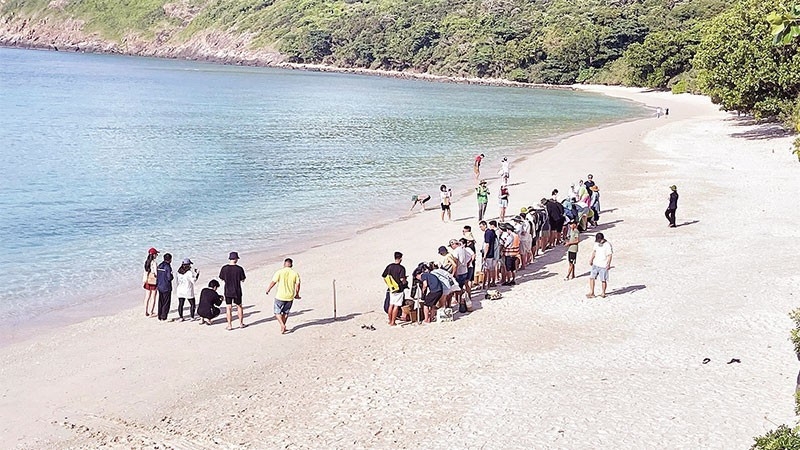As part of these efforts, the city’s Department of Tourism recently partnered with Doi Dep (Sandals) JSC to organize a famtrip to experience the Doi Dep ecosystem in Lam Dong province. The trip formed part of a pilot plan to introduce “tea culture spaces” in luxury hotels across the city.
Participants toured the 1927 Tea Factory to explore the tea production process and joined networking sessions at a golf resort that brought together hoteliers, tour operators, healthcare providers and tea producers. Many expressed interest in the “journey of the tea leaf,” a cultural story that could inspire future tourism products.
    |
 |
|
Tourists release turtles into the sea in Con Dao. (Photo: nhandan.vn) |
Pham Cong Tuan Ha, Assistant to the Chairman of Doi Dep, said the trip aimed to help participants feel the essence of Vietnamese tea and encourage collaboration among hotels, travel firms and businesses in designing new tourism products for high-end visitors while promoting Vietnamese culture.
Beyond the tea experience, the Department of Tourism has organized several survey trips to identify new tourism offerings. Vung Tau, for example, is striving to become a world-class smart and green tourism hub within the next five years.
Experts suggested that alongside reorganizing existing products, Vung Tau ward should pilot night-time economy models linked to specialized service zones to develop a coastal-themed tourism hub. Proposed attractions include the Tam Giac Beer Park, Do Chieu food street, a shopping and entertainment area along Trung Trac - Trung Nhi streets, and a beachfront café-bar rooftop check-in space.
According to Nguyen Minh Man, Deputy Director of Vinagroup, tour operators in HCM City could also leverage nearby industrial and craft tourism sites such as the Yakult Factory, Dinh Hoa lacquerware village, Minh Long ceramics, and the Binh Duong Technical School relic site to build short-day tours combining education and culture.
Nguyen Thi Anh Hoa, Chairwoman of Saigontourist Group, said several interconnected routes linking the three regions could be launched immediately, especially for short-stay visitors. These include itineraries connecting the city center to beaches like Ho Tram and Long Hai, nature retreats such as Binh Chau and Con Dao, or one-day excursions to craft villages, orchards and riverside eco-sites in Binh Duong.
Following the administrative merger, the city also holds strong potential for MICE tourism. Combining business events with leisure trips to nearby coastal or ecological destinations could further strengthen this segment’s appeal.
In addition, themed products are being developed, such as industrial and craft village tours in Binh Duong, spiritual and wellness tourism in Ba Ria - Vung Tau, and medical tourism linking HCM City’s high-quality hospitals with coastal resorts. Shorter, experience-rich itineraries are expected to attract a wider customer base and enhance the appeal of premium short trips.
Tourism experts believe there are expanding opportunities in the domestic market for weekend, short-stay and seasonal tourism, alongside growing international visitor flows. The administrative merger has created a richer, more diverse tourism landscape.
Hoa noted that HCM City now has around 681 potential tourism resources, forming a distinctive “triangle of identity” in the southeast region: the city center representing urban vibrancy and creativity; Binh Duong offering industrial, craft and MICE potential; and Ba Ria - Vung Tau serving as a hub for leisure and wellness. The areas, she added, can complement one another effectively.
Source: VNA